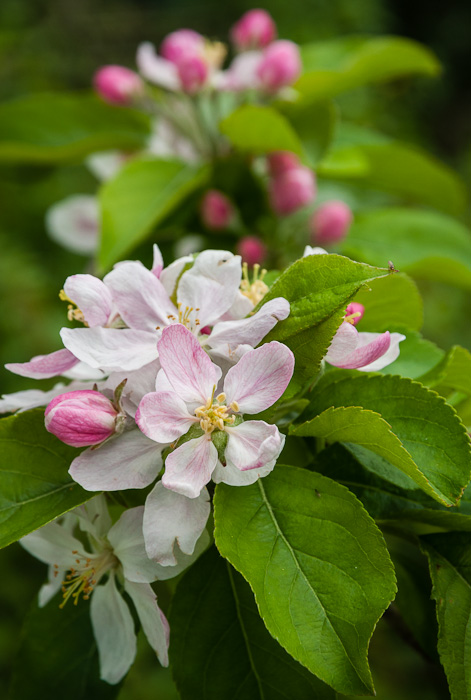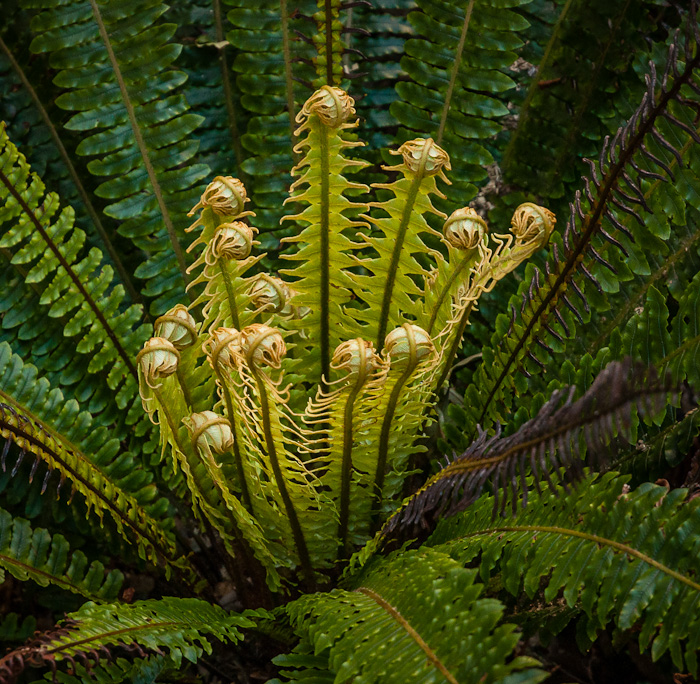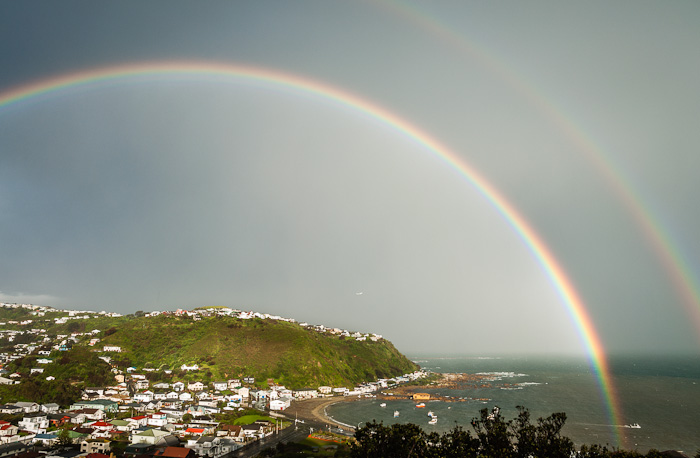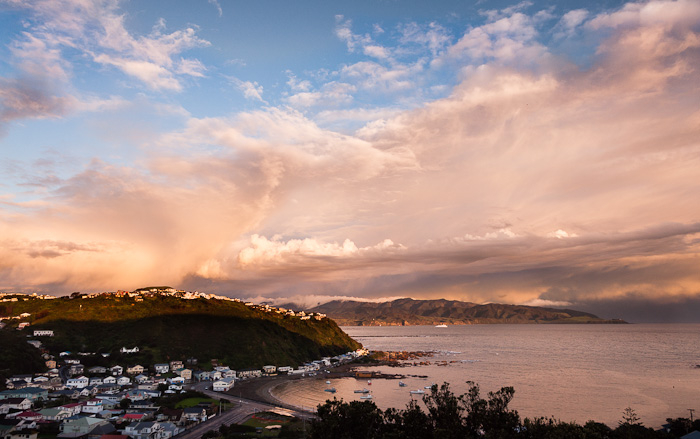Wellington's slogan is "Absolutely Positively Wellington." Another commonly applied adjective is "windy." Some days it can be hard to find anything positive about our wind, but a big advantage of living in a very windy place is the constantly changing vista of clouds and dramatic skies. And we get to see some rare cloud formations - like these Kelvin Helmholtz waves.
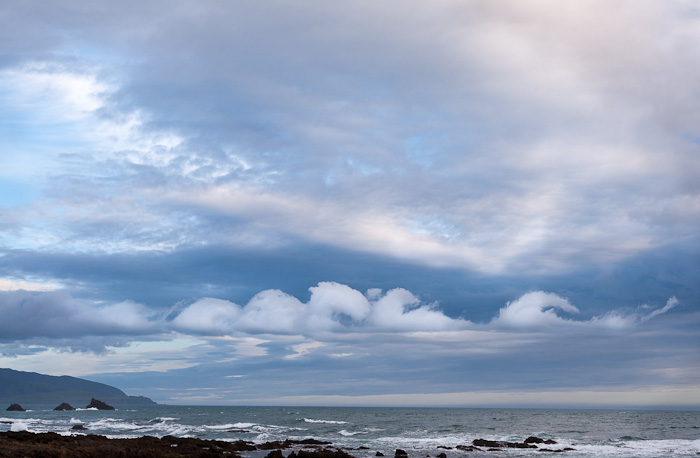
Looking like large breakers in the sea these waves in the sky are named for the phenomenon - the Kelvin Helmholtz instability - which causes their formation. As I understand it this cloud pattern arises when there is interaction at the junction of a layer of cold air below and warm air above, moving at different speeds, plus vertical wind shear and the right conditions of moisture. They are generally short-lived and these ones were forming and breaking as I tried to get a photo.
While these waves are not perfectly formed like some examples on the Cloud Appreciation Society website https://cloudappreciationsociety.org/?s=kelvin+helmholtz+waves they are a rare sight, and I was delighted to catch them while coming home along the south coast.
